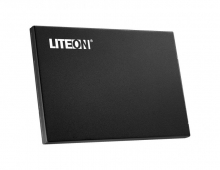LiteOn DH4O1S BD-ROM
3. CD error correction tests
Review Pages
In the following tests, we check the drive's behavior when reading scratched / defective audio discs.
If you don’t know what error concealment is, or if you have never heard of dB or ECC, this test is most probably nothing for you. It is mainly for interested users and professionals that want to know which drive has the best optical system, and how a drive performs on error correction and error concealment.
Using a CD-R disc in best shape when you test the error correction capabilities of a drive (DAE test) is ridiculous, if your drive would not read audio CDs error free from an error free disc, you would probably return the drive back to the vendor. It is far more interesting to see how a drive is behaving under critical conditions (which will also tell something about the DAE quality on CDs that have manipulated C2 error information on purpose). For that a special test we used the ABEX series of test CDs from ALMEDIO.
The testing procedure is simple. First the ABEX test CD is inserted in the drive to test, and the audio track are extracted to a hard disk. It is important to use a buffered burst mode for the test (for example, the burst more in EAC is buffered). Burst mode is important because the error handling qualities of the drive should be rated, not the ones of the software.
After having extracted the file, it is analyzed using a special program called analyse.exe. Analysis actualy includes the comparison of the extracted file (test.wav) with the reference file (reference.wav), which is the result of the extraction of the content of the the same test disc without any defects on it. The more these two files are matching to each other, the better the error correction of the tested drive is.
The analysis may take 0.5-1.5 hours depending on the amount of errors and of the computer used.
- ABEX TCD-721R


Analysis for this test took more than 1 hour.
Errors total |
Num : 397810551 |
||
Errors (Loudness) |
Num : 1882477 |
Avg : -23,7 dB(A) |
Max : -3,2dB(A) |
Error Muting |
Num : 758554 |
Avg : 1,1Samples |
Max : 470 Samples |
Skips |
Num : 15 |
Avg :2760.1 Samples |
Max 2939 Samples |
Total Test Result |
47,5 points(of 100.0 maximum
|
||
Error correction started too early. This is a sign of bad error correction mechanisms. Furthermore, the noise level was too high, almost always over -60db(A). This fact shows us that the drive's error correction mechanisms are also mediocre.
In addition, many muted errors were reported, although their sample lenght was short. It seems that the drive is capable of hiding errors.
- ABEX TCD-726R


Errors total |
Num : 397812490 |
||
Errors (Loudness) |
Num : 1882487 |
Avg : -23,7dB(A) |
Max : -3,2 dB(A) |
Error Muting |
Num : 760651 |
Avg : 1.1Samples |
Max :470 Samples |
Skips |
Num :15 |
Avg :2760.1 Samples |
Max 2939 Samples |
Total Test Result |
47,5 points(of 100.0 maximum)
|
||
Same results here, although that we had an other kind of defect.
It seems that the drive treated the two test discs in a similar manner no matter what kind of defects they carried on their surface.
- CD-Check Audio Test Disc
 The CD-Check Test Disc is another tool for evaluating the Sound Reproduction / Error correction capabilities of a CD player. The disc offers a signal combination with disc error patterns to rate the drive's abilities to read music and reproduce it completely. Five tracks on the disc contain a sequence of progressively more difficult tests. These tracks are referred to as Check Level-1 through Check Level-5.
The CD-Check Test Disc is another tool for evaluating the Sound Reproduction / Error correction capabilities of a CD player. The disc offers a signal combination with disc error patterns to rate the drive's abilities to read music and reproduce it completely. Five tracks on the disc contain a sequence of progressively more difficult tests. These tracks are referred to as Check Level-1 through Check Level-5.
The tracks are reproduced through a software multimedia player (e.g. Windows Media Player). Each level is considered as passed, if the tone is smooth, continuous without interruptions, skipping or looping. The higher the Check Level passed, the more reliable the sound reproduction of the tested drive.
Error Level |
1 |
2 |
3 |
4 |
5 |
LiteON BD O DH-401S |
5/5 |
5/5 |
5/5 |
5/5 |
0/5 |
Contrary to the previous two tests, the drive performed better here, playing successfully 4 tracks. Interruptions were reported in the 5th track.
Review Pages





















